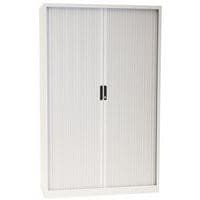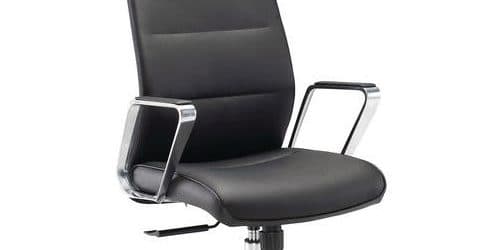Home-working & Ergonomics – How to prevent problems by using the right equipment
The impact of Covid-19 has effected all of us. For a huge number of office workers across the United Kingdom, working at home is now the only option available to them and there are a lot of suggestions that this could become the new standard way of working in future. This means that it’s crucial to ensure that workers have access to an ergonomically designed workspace at home to help keep workers happy and healthy.
Looking to the future, according to a YouGov survey only 4 in 10 workers would want to return to working in the office full-time post Coronavirus. And with 1 in 5 workers saying they’d now consider moving far away if they could continue to guarantee to work from home, it’s clear that the appetite for home working is growing.
Ergonomic equipment
Just because you’re not in the office, it doesn’t mean you should spend your workday in bed with a laptop on your lap. An ergonomic workspace is as integral to your health and safety within your home as it is in the office. In the beginning, a badly positioned screen or a dining room chair could just be a little uncomfortable or slightly irritating. Over time, however, these irritants could become more pronounced, even going as far as to cause complications like MSDs (musculoskeletal disorders). This is why it’s so important to promote proper ergonomic equipment for home workers.
Ergonomics: adopt a preventive approach at home and in the office
Ranging from repetitive strain injury, to back and neck pain, MSDs account for the biggest number of health problems for workers in the UK, with more than a million reported cases every year, costing us upwards of £5.7 billion. This highlights how important it is to ensure that staff can work safely simply so that they can continue to do their jobs for as long as possible.
Whether you work at home or in an office, the ergonomics of your workstation is essential for your health, but also for your efficiency and your professional success. Basically, the best way to set yourself up for success is to ensure that the space around you is doing everything it can to support you.
PROMOTE CHANGES IN POSTURE
Sitting isn’t necessarily the most natural position for the human body, in actuality, we’re better designed for standing and squatting. This is why it’s not only important to exercise for our overall health, it’s also important to ensure that when we’re at rest we’re doing what we can to ensure we don’t sustain injuries.
In many cases, a height-adjustable desk combined with an ergonomically designed office chair (such as a Draughtsman chair) is a great way to ensure optimum support.
That said, if you, like many, are having to work from the dining room table, don’t worry. Try and use the time you’ve saved travelling to and from work exercising outside by going for walks or spending time outside with the family.
Remember, swapping between sitting and standing positions alone isn’t enough to reduce the risk of an MSD. It’s also important to ensure you’re adopting the correct posture. For example, whilst seated, your feet should be flat on the floor rather than crossed. Keep your neck in a comfortable position (think about aligning your head to be in line with your heart rather than in front of it) and keep screens positioned at roughly eye level. To help with this, Manutan UK sells adjustable desk mounts that you can use to position your screen in the best place for you.
CREATE THE CONDITIONS FOR OPTIMAL LIGHTING
Natural lighting is great to help sustain a normal circadian rhythm as well as providing vitamin D which is a fantastic way to help keep your immune system healthy. Therefore, at home, it’s a great idea to work near a window and ensure you’re getting plenty of natural light. Be careful to avoid any screen glare that could tire out your eyes, either by positioning your screen in a way that won’t catch the sun or using anti-glare filters on screens.
For those of us who can’t work near a window, consider the use of a light therapy lamp which has a range of benefits.
RELIEVE THE WRISTS
Keeping your hands in line with your forearms relieves the tension on the wrists and limits the strain on the arms and shoulders. Using an ergonomic mouse mat can also help to relieve tension.
LIMIT THE IMPACT OF REPETITION
Tendonitis, carpal problems, muscle fatigue and a myriad of other health problems are often a consequence of repetitive tasks. When looking at ergonomics within the workplace, the objective is generally to limit the harmful consequences that our day to day tasks take on our bodies. For example, if your job involves a huge amount of typing, a properly designed, ergonomic keyboard will drastically reduce the risks of injury when compared to one that hasn’t been designed to ensure the optimal health of the user.
By following these simple tips, you will fully enjoy the benefits of telecommuting, without damage to your health.
| Workstation: ask yourself the right questions! At home or in the office, installing an ergonomic workstation means asking the right questions: Is the top of your screen at eye level? |
Browse our home office equipment here. Alternatively, contact our customer service team on 0800 652 6000.






